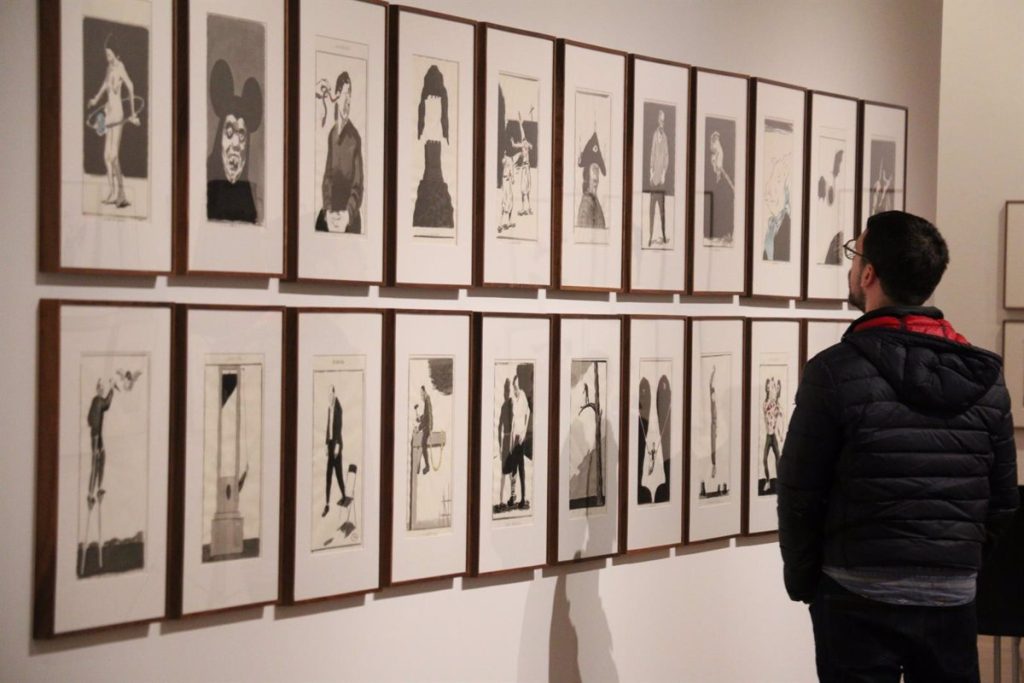
The Círculo de Bellas Artes has presented ‘OPS, El Roto, Rábago. A microhistory of the world’, an exhibition on the work of Andrés Rábago that brings together more than 200 pieces belonging to the three heteronyms to “destroy the established power”.
The exhibition includes outstanding series in his production such as ‘Bestiario de OPS’, ‘No se puede mirar’ and ‘Oh, la l’art’ by El Roto and outstanding works by the painter Rábago both on canvas and on paper. “This is a tribute to the work of one of the most outstanding artists of our country”, they have pointed out from the institution.
“As Bertolt Brecht said, art is not a mirror to reflect the world, but a hammer to transform it. In these three artistic facets of Andrés Rábago we observe three different hammers, three tools of destruction of the established powers, through criticism , of satire and humanism, to achieve a more egalitarian, free and fair society in the Spain of the dictatorship and transition”, commented the director of the Círculo de Bellas Artes, Valerio Rocco.
Rábago has celebrated this “return” to the Círculo, a place he frequented as a child to visit exhibitions. “For me, this space is my sanctuary and I have always wanted to exhibit here”, the cartoonist pointed out.
Throughout a career spanning half a century, in the work of Andrés Rábago one can trace themes, motifs and symbols that have persisted, with variations, in the production of his three heteronyms and that affect different aspects of reality, embodied in different ways (the forest, the birds, the surveillance, the family, the figure of the double, the wars, the art, the hats, etc).
‘La mirada de OPS’ collects them from a critical and scathing point of view, which portrays the unconscious of a time and a country -the last years of the Franco dictatorship- and questions its ideological heritage and its consequences . It is situated in a stylistic context close to surrealism and the Panic movement.
“El Roto’s drawings are sometimes close to Beckett’s poetics of the absurd through a dazzling and paradoxical use of language; in fact, many of these texts could be collected in a book of aphorisms and function autonomously”, he pointed out. the organizer of the exhibition.
The third heteronym is the painter Rábago, who is located in an area close to the spiritual and deals with aspects that transcend the automatic and superficial gaze of what is conventionally called ‘reality’.
“In his canvases we perceive an atmosphere of calm and simplicity, which is not derived so much from what his characters do in silence, but from what silence does with his characters”, has written Óscar Curieses, writer and curator of the exhibition, in the homonymous catalog of the exhibition.
